The Marine Unit Charged With Digitally Connecting Everything Over The Battlefield

The organizational structure of the United States Marine Corps' Operational Test and Evaluation Squadron One (VMX-1) has mostly stayed the same since its creation in 2016. However, one big change came in 2020 with the creation of the Tactics and Integration Department (T&I). The birth of the department was the direct result of the planning guidance put forward by former Marine Commandant Berger, known as ‘Force Design 2030.’
To make Force Design 2030 happen, VMX-1 needed to make sure all Marine assets could communicate and fight together. The squadron was participating in several warfighting venues and ventures of future capability, but there was an assumption in the Marine Corps that everything was communicating on a level that was not necessarily true of reality. Former VMX-1 Commanding Officer Byron ‘Shrek’ Sullivan created the new department to absorb that integration mission and try to make those critical data connections where they did not already exist.
Editor's note: This is the fourth in a multi-part series covering VMX-1's highly unique mission, diverse stable of aircraft, and the critical role it is playing in shaping the future of Marine Corps aviation. You can check out the other installments here, here, and here.
Sullivan told The War Zone, “The big thing we pushed forward in my tenure as the commanding officer of VMX-1, is that when you look at all of the systems and programs we test, whether it is AH-1, UH-1, F-35, CH-53K, MV-22, or what we are doing on the C3 (Command, Control, Communications) side, they are all great weapon systems on their own but, how are we going to fight them together? We developed the Tactics and Integration Department with subject matter experts from all the different areas so we can fight as an ACE [Air Combat Element] weapon system.”
The ACE is the aviation component of the Marine Air-Ground Task Force (MAGTF). It is organized to perform the six functions of Marine Corps aviation which include:
Air Support
Assault Support
Anti-Air Warfare
Electronic Warfare
Aircraft and Missile Control
Aerial Reconnaissance
“T&I looks at all the things we are testing. For example, we were testing the JAGM [Joint Air Ground Missile] on the AH-1Z. That missile has all sorts of capabilities that could be brought together with say an F-35 or an MV-22. We can shoot that missile, bomb on [a set] coordinate, where it will fly out and turn on its millimeter-wave radar and it will find a target. Now, I have taken an AH-1 that is good at shooting missiles and put it in a kill web where an F-35 is airborne doing all the things an F-35 does, but now the pilot sees a group of small boats. That F-35 might not have the right weapons to kill those boats, but he can see a Cobra that has eight JAGM missiles. The F-35 can designate each of those targets and have the Cobra kill them without the Cobra being exposed to the threat.”
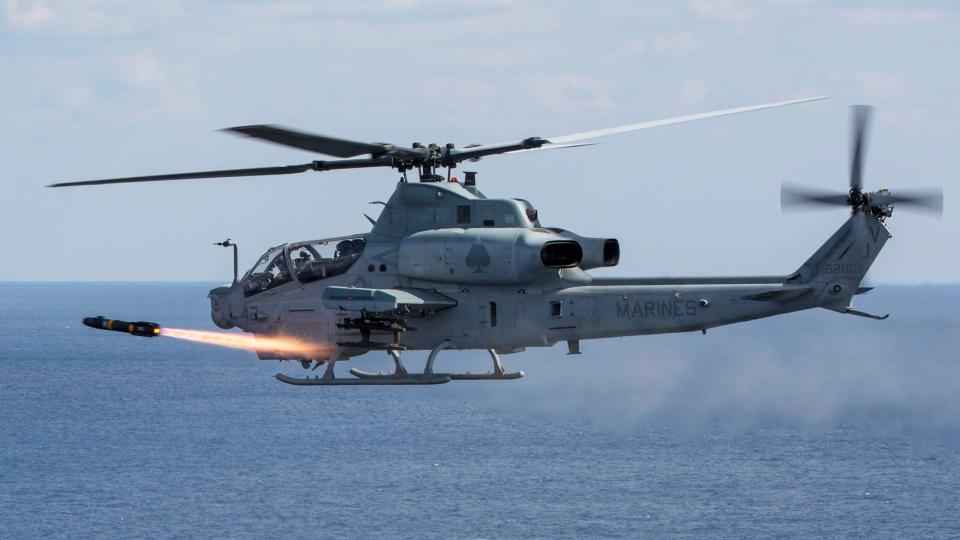
The T&I department is one of three that report directly to VMX-1's Chief Operational Test Director (COTD). The other two are the TACAIR department with F-35s and the Assault Support Division (ASD) which has the MV-22, CH-53K, and the AH/UH-1s.
T&I started off with VMX-1 building up their situational awareness of what the intelligence community had to say, as well as a number of science and technology efforts for the future. Another mission was establishing the initial Tactics, Techniques, and Procedures, or TTPs, in order to see new capabilities from the beginning all the way to a maturation level where they can be used in combat in the future. As the experimentation arm of the aviation efforts of the Marine Corps Warfighting Lab (MCWL), VMX-1 also used T&I to integrate with organizations such as DARPA (the Defense Advanced Research Projects Agency) and the Cunningham Group with the office of the Deputy Commandant for Aviation.
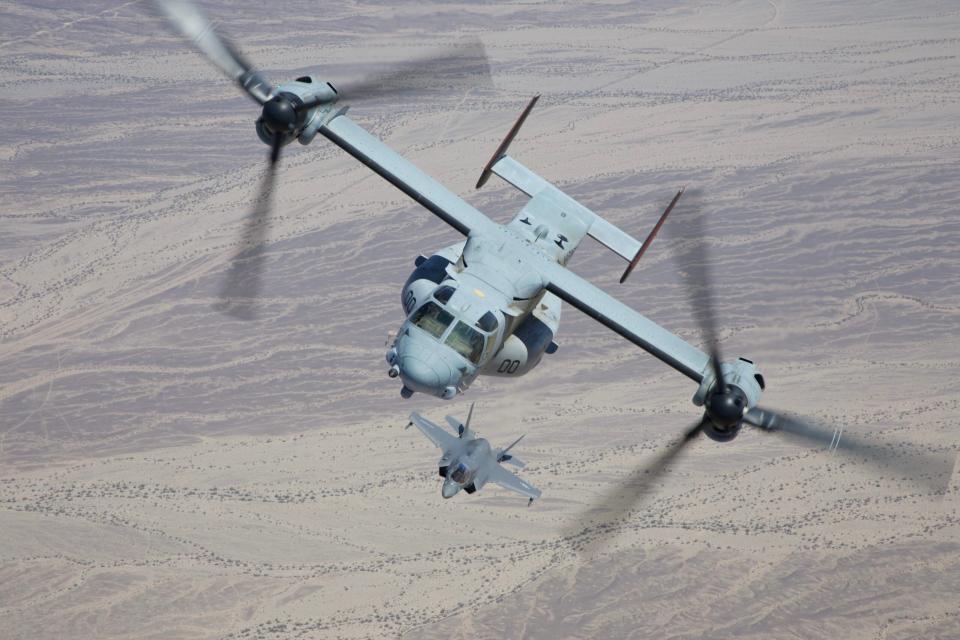
Since its inception, VMX-1 has had a very strong relationship with DARPA which has paid huge dividends for Marine aviation. DARPA is a research and development agency of the United States Department of Defense responsible for incubating emerging technologies for use by the military. Lt Col. ‘Sonny’ Duncan has led the T&I department since 2020 and did a tour at DARPA before coming over to the squadron.
Duncan explained to The War Zone:
“We modeled ourselves as a department very much like DARPA. And so, we leverage that relationship, having done that in the past with DARPA, to make ourselves as flat as possible so that we can integrate in the squadron itself. Our department is built with a department head but then there are three divisions underneath it. The divisions were named after capabilities, not necessarily actual type model series (TMS), like you would have seen with the F-35 as an example. We have Fires and Maneuver... [which was] useful at the tactical edge of battle. That's where the Fires and Maneuver came into place. We worked with ground units, infantry units, and special [operations] forces to help design TTPs to have a very, very quick and deliberate communication process that could result in our aircraft supporting them on the ground and their scheme of maneuver. That's kind of where Fires and Maneuver lived.”
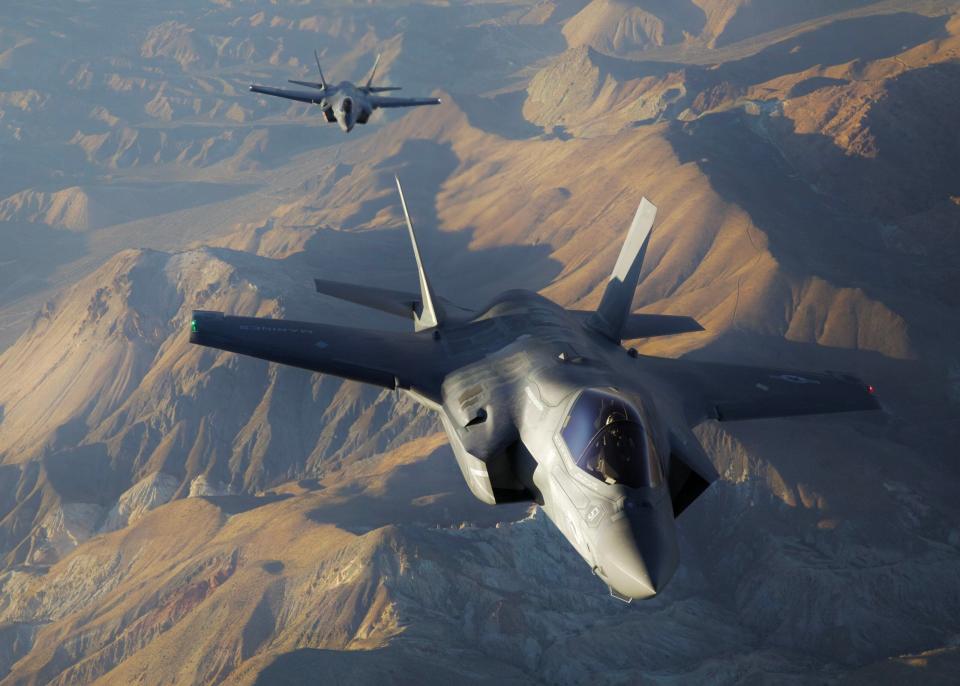
Prior to the creation of T&I, VMX-1 had a Tac Air department, and that department was modeled after Marine Aviation Weapons And Tactics Squadron One (MAWTS-1), which serves as the schoolhouse for Marine aviation. For VMX-1's Tac Air, they had F-35 and Unmanned Aerial Systems, C5IRST (Command, Control, Computers, Communications, Cyber, Intelligence, Surveillance, Reconnaissance and targeting) and RISTA (Reconnaissance Surveillance Targeting and Acquisition). They were integrating with the Ground Combat Element (GCE), so any of the GCEs that had the opportunity and ability to communicate with an aircraft could pump information to them from unmanned systems, which included the RQ-21 Blackjack.
When the Marines began divesting the RQ-21, they did so with the expectation that they were going to get involved in what has become known as the MUX-MALE (Marine Air-Ground Task Force Unmanned Expeditionary Medium-Altitude, High-Endurance) program, and the actual flying platform that came out of it, which is currently the MQ-9. Leaders at T&I wanted to make sure that not only was that platform ready to go, but that all the payloads associated with it were maturing in the direction that they wanted.
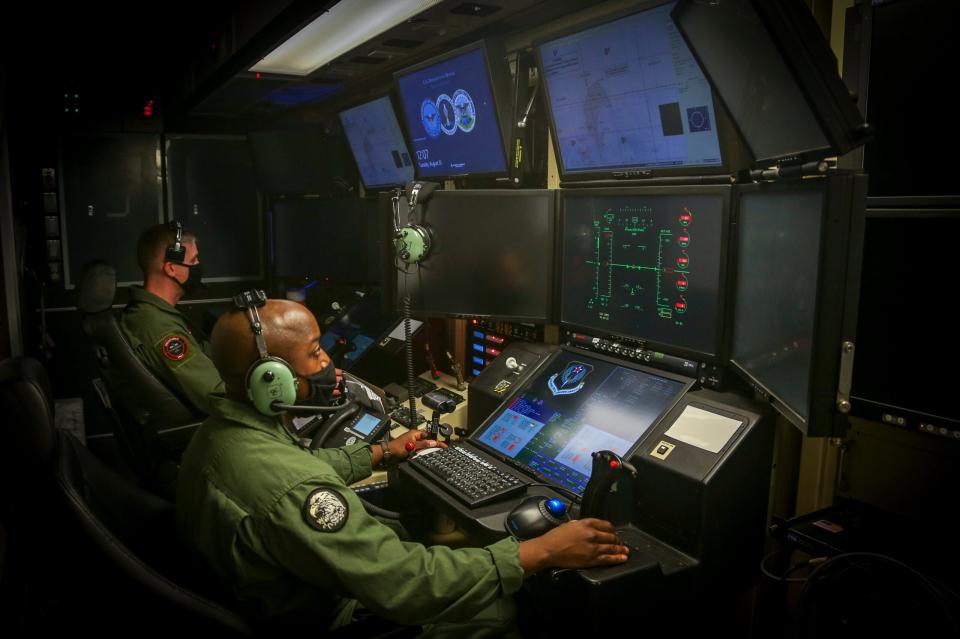
For T&I in the context of uncrewed aircraft systems, they are not only looking at the direction the Marine Corps is trying to go, but they are looking at every unmanned asset on the battlefield. The reason being is that they don't want to necessarily own them as the Marine Corps, but they want to be able to talk to them and be able to use the information that they provide.
Lt Col. Duncan continued, “So as an example, you have unmanned all kinds of things. You have unmanned surface vessels, unmanned subsurface vessels, and unmanned proliferated low earth orbit. We are looking to make sure that our equipment can talk to all of those things and benefit as recipients from everything. From an F-35 perspective, we have always fought with the intent of a joint concept as a Marine Corps, which I'm actually very grateful to the Marines for being very aggressive in that pursuit, but the F-35 almost shoved it into the foreground which is fantastic.”
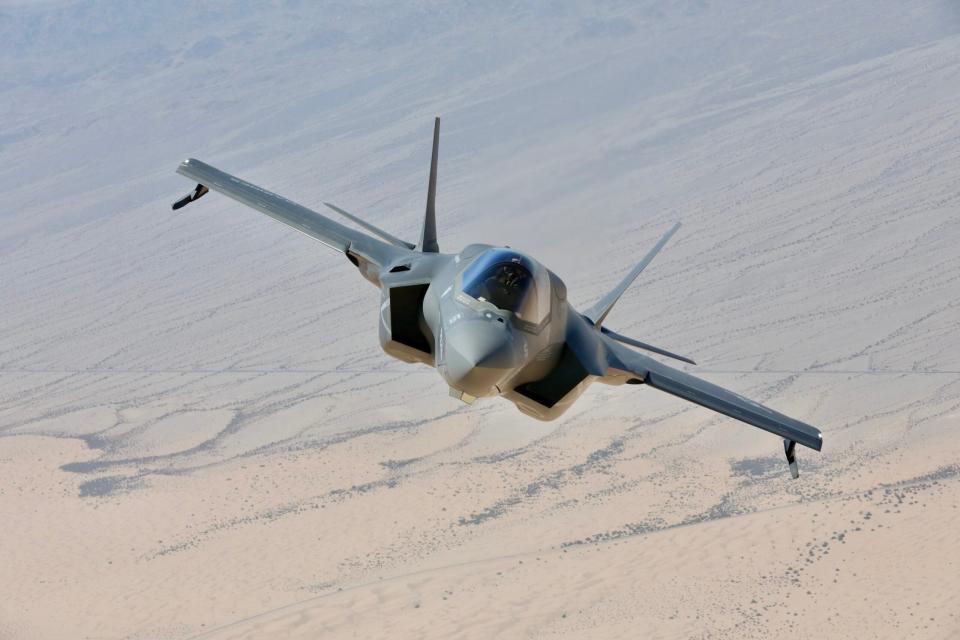
In the past, artillery was known as the king of battle, but today C5IRST is quickly catching up. While VMX-1 doesn’t necessarily perform all the functions under the C5IRST umbrella, they integrate as a T&I department specifically within C5IRST, including with space-based assets.
Duncan added, “right now, we're envisioning everything we're doing being tight with our goal to basically be a kill web enabler. It used to be a kill chain, meaning to find out where the target is, 'I need to find it, I need to fix it, I need to target it, I need to track it, at some point I want to engage it,' and then 'I need to determine how successful that engagement was.' Generally speaking, we thought of it linearly, in the context of the same type of model series [such as an aircraft type family]. Now, we want to speed that up and we want to pair up the best match with respect to what weapons we have, what sensors that we have, and look at it in the context of a joint fight rather than in the context of a single cockpit or a single squadron or a single whatever. We're already seeing it in terms of data links, we're seeing it in terms of communication, we're seeing it in terms of antennas, we're seeing it in terms of near real-time tactical data that is traveling the globe. That is what we're after. So when I say kill web, it may look like one sensor finds it, we use exquisite data passage to get that information to a long-range shooter who is able to actually fire on it, and another sensor may be the one that determines whether or not those effects were successful. That is how T&I began.”
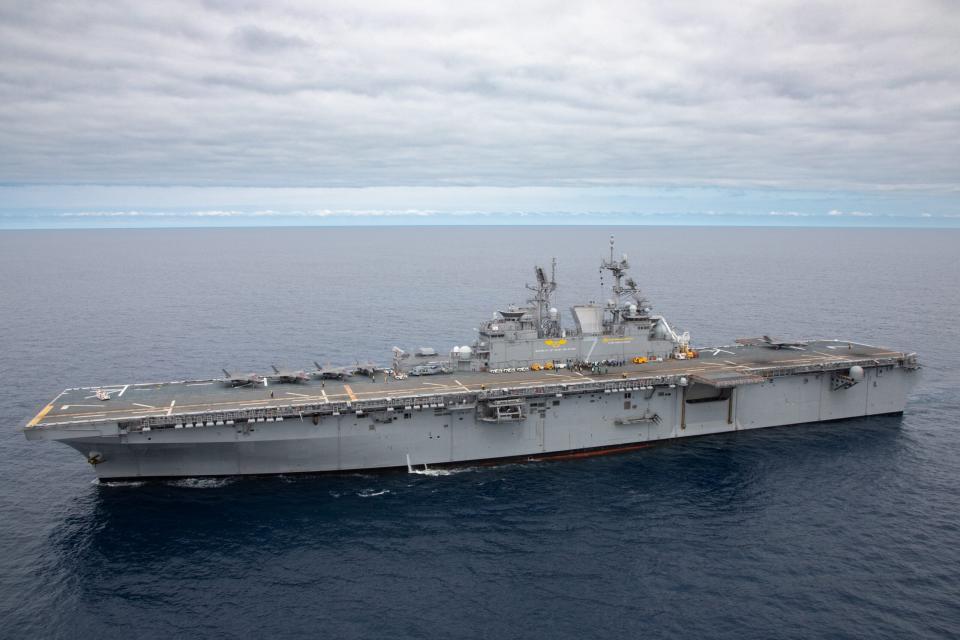
Some major challenges for the T&I department involved how to incorporate all the information the F-35 has to offer. The F-35 was designed to suck in a wealth of information through an array of sensors built into the aircraft while also processing that information to provide the pilot with a clear tactical picture of the battlespace. The F-35 is equipped with the highly secure and hard-to-detect Multifunction Advanced Datalink (MADL) network, as well as Link-16. MADL allows multiple F-35s to share their information for a comprehensive battlespace picture, improving lethality and survivability. Meanwhile, Link-16 has a wider capability to share information among other types of aircraft and platforms, although it is far more detectable than MADL.
Lt Col. Duncan explained, “One of the huge challenges from the future warfighting standpoint is the fact that the F-35 does absorb a ton of information. The challenge there is to find what information is useful to other people and so that is a huge part of what we are trying to do. We must take in all that information and make it available to end users in a tactical sense. Who needs what? We need to make sure they have the right information, at the right time, in a tactical timeframe where a decision can be made in order to get the intended results on a target. They can be kinetic results or non-kinetic results. The airplane can see across a large component of the spectrum. It can catalog it and can use it in very useful ways for the pilot and be available for the pilot to share with other people.”
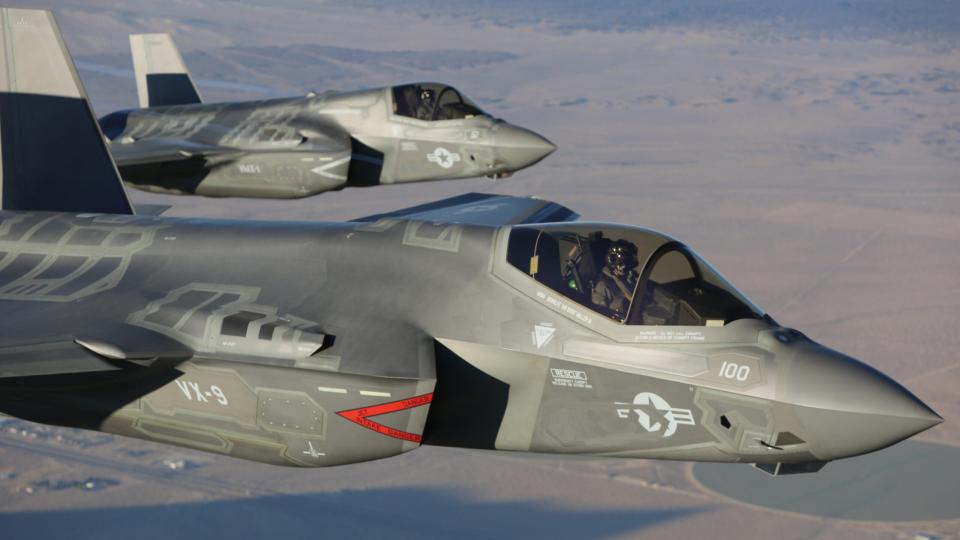
Tactics and Integration has spent a lot of time working with the weapon schools to look and see how they can complement what they're involved in. The reasoning behind this is because they are tactically using weapons and systems that are in use today. Where T&I complements them is that they have to maintain their awareness of what is happening in terms of current capabilities while also looking at what is coming in the future. That's where the Science and Technology efforts come into play. They handle everything from ideas on PowerPoint, all the way to new pods and black boxes on aircraft.
Duncan said, “VMX-1 is an amazing place because we have in our charter, ‘true operational test.’ In addition to that, we have experimentations. As an example, when we tie in for our initial TTP development, when MAWTS-1 runs the WTI classes, we join them in their Advanced Development Tactics and Evaluation [ADT&E] and we are the flying arm of the projects that they bring on board, to test it in a situationally relevant environment.”
T&I works with all the services regularly, including Space Force. The Space Force ensures the communications requirements of the Joint Force. One way they do that is through a system known as the Mobile User Objective System (MUOS). MUOS is a narrowband military communications satellite system that supports a worldwide, multi-service population of users, providing increased communications capabilities to newer, smaller terminals. MUOS has the ability to share large amounts of data very quickly among a number of 'customers.'
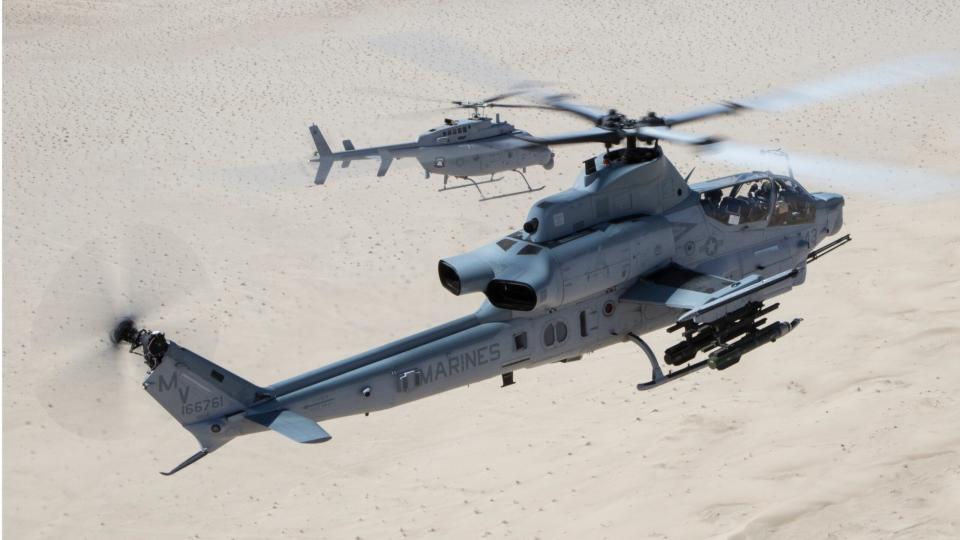
VMX-1 was the first squadron to take the F-35 to the U.S. Army Futures Command's project convergence exercise, which was run out of the nearby Yuma Proving Ground. Project Convergence began in 2020 as a way for the Army to evaluate the progress of its many modernization efforts. In 2021 the exercise became a joint initiative to better connect the many sensors and shooters on the battlefield.
VMX-1 knows how the Marine Corps is talking and communicating with regard to data sets and data passage to its various platforms, but events like Project Convergence help the force to better understand how the Army does things as well as the other services. When VMX-1 has solutions to problems, those solutions are shared amongst the other services.
Lt Col. Duncan stated, “We're not living in a stove pipe that is just the Marine Corps. And then even in the Marine Corps, we're not living in this stove pipe that is just the F-35 or just the H-1 or just the MV-22. We're looking to tie them all together. We are also involved in testing different payloads and different equipment that can go on the airplanes. So, we have an opportunity to use these airplanes in a capacity that they've never been envisioned to be used before. That's huge, especially when you're like ‘man, okay, in our force today, we have this one asset that can really do this one job very well. What happens if that asset is tied up doing something else? Do we have redundancy built in?' So, we're starting to find places where we can use other airplanes, and completely off the script of what you would traditionally think them to be used for, in order to satisfy those requirements and those desires.”
A great example of that is putting the Low-Cost Acoustic Processor on the MV-22 giving the Marines a fairly cheap way to help track submarines.
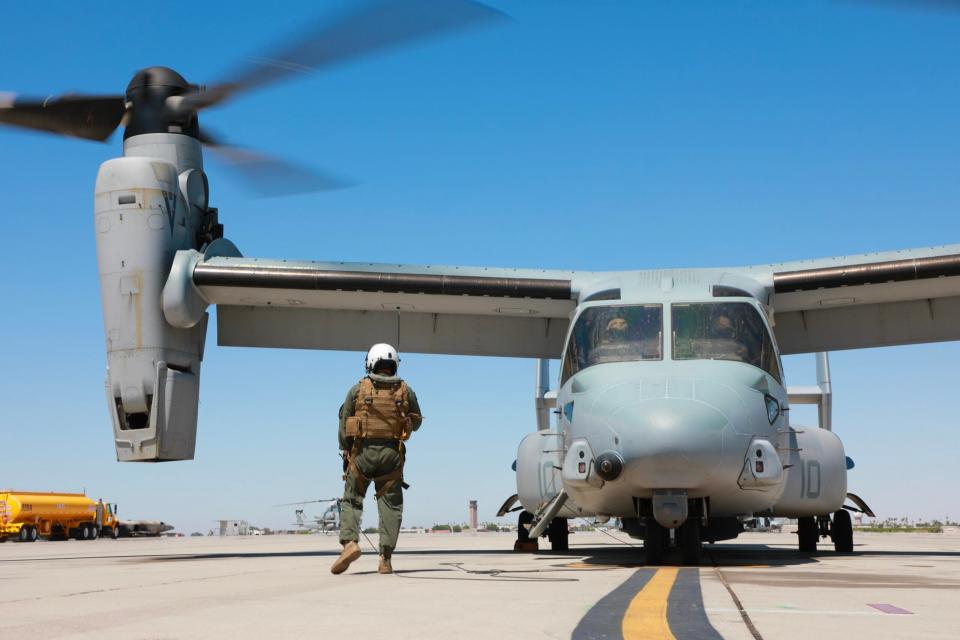
The Science and Technology division of the Marine Corps Warfighting Lab (MCWL) and their counterparts in VMX-1 often work hand-in-hand. Duncan challenged his Marines to constantly be looking for what are the next big things besides being tied into other science and technology efforts at the Marine Expeditionary Force level. T&I has a few civilian contractors to provide a level of continuity within the unit, and is about to get a plus up in the number of Marines to help them not just be in the lane of aviation, but be able to communicate across to everything else in the battlespace.
While MCWL is constantly looking for programs and technologies to help VMX-1 achieve their objectives, VMX-1 cannot necessarily go out and solicit things on its own. MCWL can bring somebody on as a performer or as a contractor for something that leadership has determined to be a priority. They then can reach out to VMX-1 as uniformed personnel and say, ‘can you guys help us look at this?’

Usually every year MCWL comes up with a list of its top 30 things, which helps VMX-1 take a glimpse into the future of what might be coming. The Cunningham Group provides Marine aviation with a vision for the future. They lay out things that are a priority and tell VMX-1 where they need to focus their effort and energy. Partnering with MCWL, they help to identify and pursue promising technologies that they believe will be beneficial to a future fight by working closely with both industry and academia.
When T&I started, they had only four officers, and approximately 10 enlisted Marines, so they could not afford to be inefficient. Today, T&I is building up personnel, including contractors, as they bring in the MQ-9 into the squadron, while also continuing to look down the road for the next big things that will help Marine Aviation win the next fight. As they gaze to a future vision of warfighting and speeding up the ‘kill web,’ the unit is set to have a massive impact on the future ways in which the Marines and other services communicate and fight.
Contact the editor: tyler@twz.com

